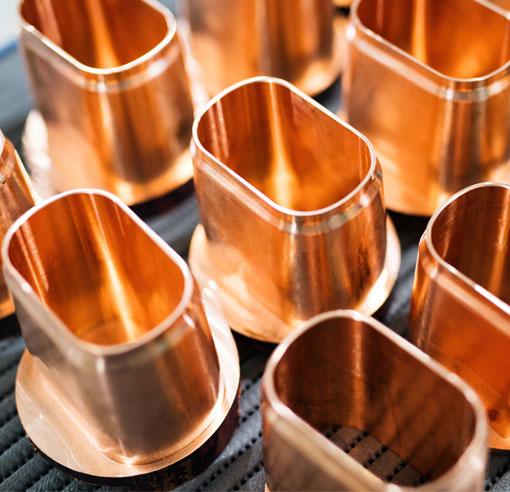Copper is among the oldest metal materials and this is not surprising considering its exceptional properties. More specifically, copper exhibits excellent corrosion resistance and thermal as well as electrical conductivity, making it a valuable material for various applications.
Copper's mechanical properties make it a highly machinable metal with good strength, hardness, superior thermal and heat conductivity, and corrosion resistance. Given these qualities, it is no wonder that it is a popular material chosen for both functional and aesthetic purposes. Copper can also be alloyed in order to improve its mechanical properties, making it an even stronger choice.
CNC machining of copper parts is one of the most precise metal machining services employed in various industries for fabricating copper parts. Despite this, there are various factors to consider when machining copper parts.
Factors To Consider In CNC Copper Machining
1. Picking the Right Copper Material Grade
Before CNC copper machining, it's important to choose the right grade of copper material that's most appropriate for your specific application. For example, choosing pure copper to manufacture mechanical parts can be both costly and unsuitable due to its unsatisfactory machinability. Instead, free-machining copper offers excellent machinability and is the ideal choice for such purposes.
2. Design for Manufacturability
You must fulfill the requirements and specifications of the design before machining copper to ensure the manufactured copper part functions as intended. For aesthetic copper parts, it is advisable to maintain a wall thickness of 0.5mm. To achieve an aesthetic copper part, you can also adopt design best practices, such as reducing the number of parts setups, dimension checks, and avoiding deep pockets with small radii.
3. Set the Fit Feed Rate
The speed at which the cutting tool engages the workpiece is known as the feed rate. Therefore, it is important to set the correct feed rate before machining copper parts, as it affects the quality, lifespan, and surface finishes of the copper parts. Furthermore, copper is a good conductor of heat and a high feed rate can lead to increased tool wear over time.
4. Choose the Right Tool Material
Many copper grades have different levels of machinability and hardness, making selecting the appropriate tool material for copper part machining crucial. Furthermore, in the manufacture of high-speed cutting tools used in copper machining, CNC steel machining is commonly employed to avoid issues such as tool damage and chip formation.
Asianstar many CNC and stamp machines allow us to produce various copper parts, different sizes, and structures are all well done by suitable solution.


